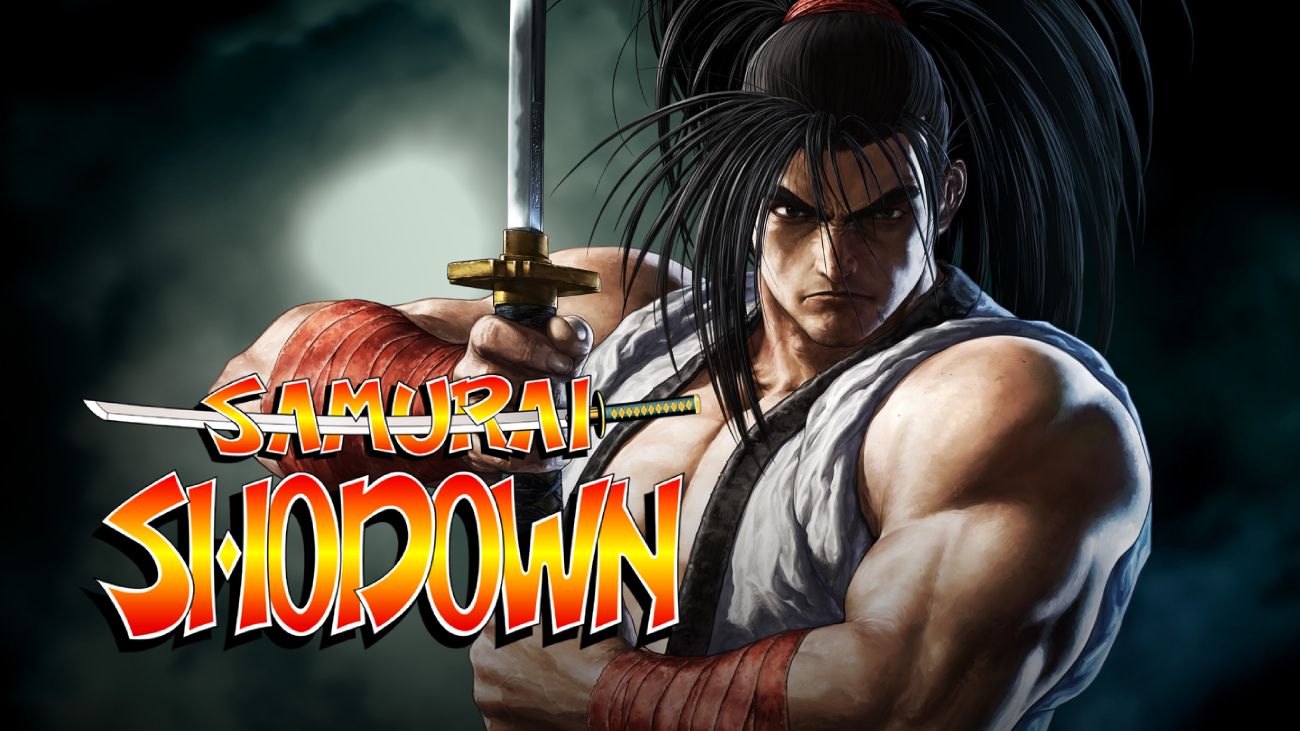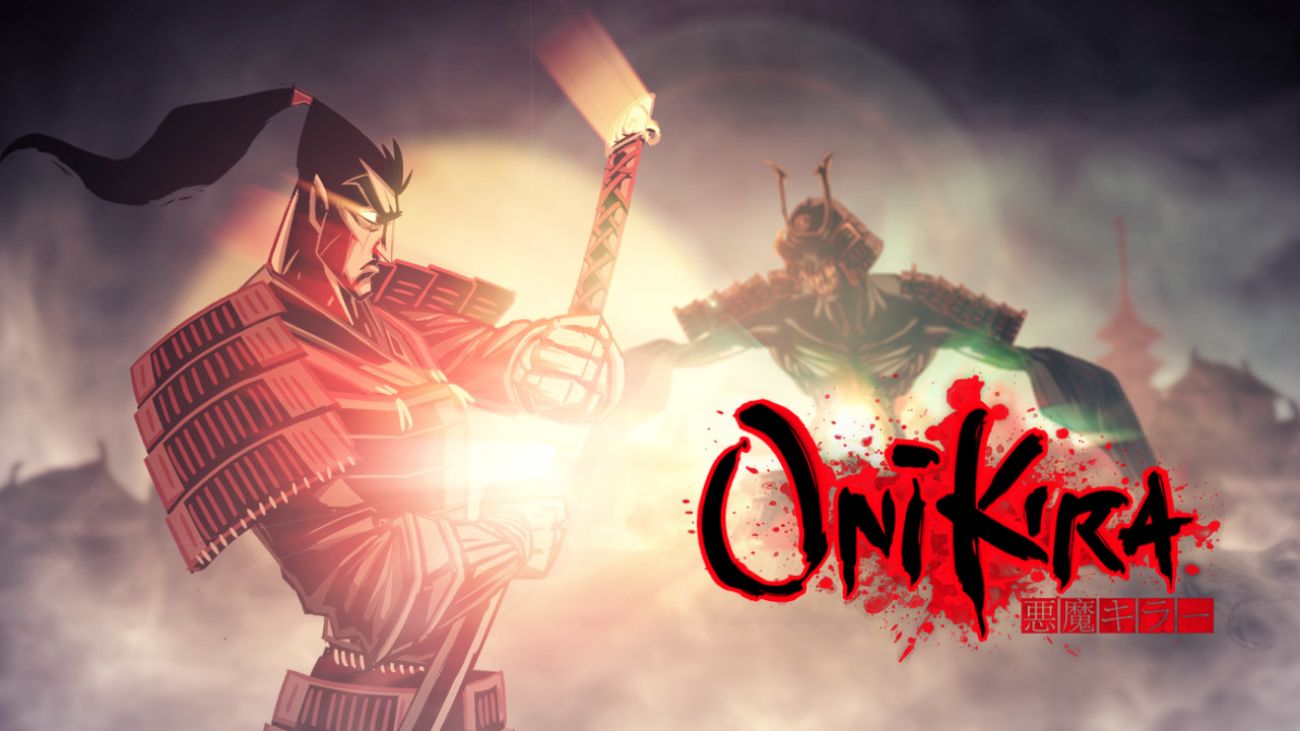At the end of the Muromachi period, the period of war, also known as the Sengoku period, came to an end with the Tokugawa clan.
After winning the Battle of Sekigahara, Tokugawa Ieyasu established the Edo Shogunate. He defeated the Toyotomi family left behind by Toyotomi Hideyoshi at the Battle of Osaka Castle. In this battle of Osaka Castle, it was Nobushige Sanada (Yukimura) who cornered Ieyasu.
In this battle of Osaka Castle, it was Nobushige Sanada (Yukimura) who cornered Ieyasu. Nobuyuki Sanada, Nobushige’s older brother, dedicated himself to the Tokugawa family and laid the foundations of the Sanada family, which continued until the Meiji period. This time, I’m going to tell you about Nobuyuki Sanada.
Nobuyuki Sanada’s Birth and Origins
Nobuyuki Sanada was born in 1566 as the eldest son of Masayuki Sanada. The Sanada family was a branch of the Umino clan from Ogata District, Shinano Province (now Ogata District, Nagano Prefecture).

The Sanada family was a branch of the Umino clan from Ogata District, Shinano Province (now Ogata District, Nagano Prefecture). He serves Takeda Shingen, who has ruled Kai (today Yamanashi Prefecture) and Shinano (today Nagano Prefecture) since the time of Nobuyuki‘s grandfather, Yukitaka Sanada.
As his father, Masayuki, was Yukitaka‘s third child, he was adopted by the Muto family. However, in 1575, Shingen‘s sons Katsuyori Takeda and Oda Nobunaga fought in the Battle of Nagashino, which resulted in the crushing defeat of the Takeda family, and Masayuki‘s older brothers died in battle, so he returned to the Sanada family name and his family began, I inherited.
Nobuyuki was born as the eldest son of Masayuki Sanada, who returned to the Sanada family. Nobuyuki spends his childhood as a hostage of the Takeda family. In 1579, he was allowed to celebrate his Genpuku at the same time as Nobukatsu, the eldest son of Katsuyori Takeda, and received the first character of Takeda Shingen and the name Nobuyuki.
The fall of the Takeda family
In March 1582, Oda Nobunaga, who was promoting hegemony mainly in the Kinki region, carried out the conquest of Takeda in the provinces of Shinano and Kai. Katsuyori Takeda, whom Masayuki Sanada served, committed suicide on Mount Tenmoku, and the Takeda family was destroyed.
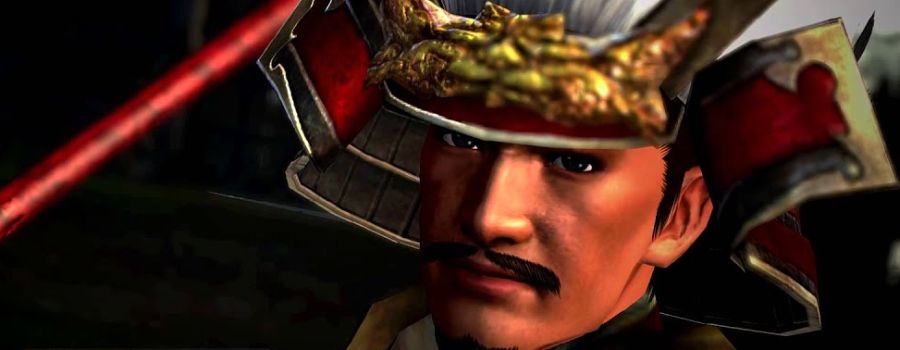
Nobuyuki Sanada, taken hostage by the Takeda family at the time, escapes with his father Masayuki to Ueda Castle. However, that same year, Oda Nobunaga, who had overthrown the Takeda clan, was killed by his vassal Akechi Mitsuhide at Honno-ji temple and committed suicide.
At that time, Shinano Province and Kai Province were Oda family territories. However, due to the death of Oda Nobunaga, a rebellion broke out against the Oda family in the provinces of Shinano and Kai (Tensho Migo War). It’s Ujinao Hojo from the Kanto region who invaded the chaotic Shinano and Kai provinces of the east. The Sanada family has shown its vassalage to the Hojo family.
Around the same time, Uesugi Kagekatsu, who ruled Echigo province (now Niigata prefecture), also advanced toward Shinano province from the north. The Sanada family, which had shown an attitude of subordination to the Hojo family, led by Nobuyuki to disrupt Kaizu Castle, which was in Uesugi territory.
However, Tokugawa Ieyasu, who ruled the southern Tokaidos, also invaded the provinces of Shinano and Kai. Many former Takeda vassals joined the Tokugawa family and, at the invitation of their uncle Nobutaka Sanada and others, Numata Castle was recovered from the Hojo clan, and the Sanada family also became hostile to the Hojo clan regarding the Tokugawa clan.

Nobuyuki led a force of 800 cavalrymen and reportedly achieved great military success by recapturing Tekomaru Castle, defended by 5,000 Hojo clan soldiers, in a single day. The Nobuba Yoda guerrilla and others were also successful, and the Sanada family managed to expel the Hojo side from the Numata region.
In Tensho year 12 (1584), the Sanada family also took control of the Ogawa district, Shinano province, under their control. In this way, they came to have a territory from the eastern part of present-day Nagano Prefecture (Toshin Region) to the northern part of Gunma Prefecture.
The Tokugawa family and Toyotomi Hideyoshi Dispute
After the fall of the Takeda family, the Sanada family followed the Tokugawa family. However, in 1585, when the Tokugawa family and the Hojo family formed an alliance, the Tokugawa family decided to cede part of the Sanada family’s territory to the Hojo family.
Masayuki Sanada breaks off relations with the Tokugawa family and submits to the Uesugi clan. This led Masayuki to fight the Tokugawa family (the First Battle of Ueda). Nobuyuki entered Toishi Castle, a branch of the castle, with over 300 soldiers, and used guerrilla warfare to disrupt the Tokugawa clan.
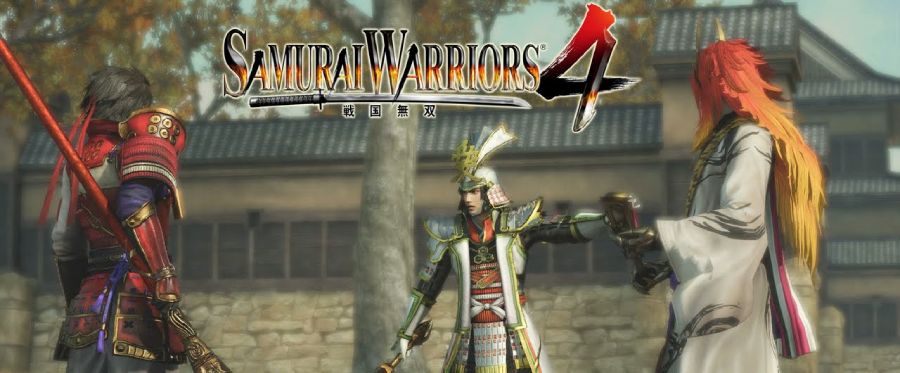
After this, Masayuki became a vassal of Toyotomi Hideyoshi through Kagekatsu Uesugi, and in 1589 he also made peace with Ieyasu. The Sanada family became the ruling daimyo of the Tokugawa family. Ieyasu greatly appreciated Nobuyuki‘s talent, so he adopted and married Komatsuhime, the daughter of his former vassal Honda Tadakatsu.
In this way, Nobuyuki became close to the Tokugawa family, even within the Sanada family. In 1590 Toyotomi Hideyoshi subjugated the Hojo family and, after the war, the territory of Numata was established as the territory of the Sanada family. Nobuyuki becomes the lord of Numata Castle.
In 1594, he was appointed to the rank of Jugoi (Fifth Junior Rank, Lower Province of Izu), then promoted to Fourth Junior Range (Fourth Junior Rank, Lower Degree), his principal official being Chamberlain, who also held the position.
Battle of Sekigahara
Toyotomi Hideyoshi died in 1598. After Hideyoshi‘s death, Tokugawa Ieyasu, the highest-ranking member of the imperial court, began to take control.

In 1600, Ishida Mitsunari, five magistrates who had lost his position, gathered an army against Tokugawa Ieyasu (Battle of Sekigahara). His father, Masayuki Sanada, and his younger brother, Nobushige (Yukimura Sanada), join Mitsunari‘s Western army. This is because Nobushige married the daughter of Yoshitsugu Otani, who joined Ishida Mitsunari‘s army. Nobuyuki, whose wife was Komatsuhime, daughter of Honda Tadakatsu, a senior vassal of the Tokugawa clan, whom he married after being adopted by Ieyasu, decides to join Ieyasu and his army.
The Sanada family’s father and younger brother joined the Western Army, and the older brother joined the Eastern Army. Nobuyuki belonged to the Tokugawa Hidetada army, which led the main force of the Tokugawa clan, and took part in the siege of Ueda Castle (Second Battle of Ueda). Before the battle, Honda Tadamasa, son of Honda Tadakatsu and Nobuyuki‘s brother-in-law (younger brother of his wife Komatsuhime), and Nobuyuki went to try to persuade their father, Masayuki, but reportedly failed in the end.
Nobuyuki is ordered to capture Toishi Castle, defended by Nobushige, but to avoid wasting Sanada‘s soldiers, he sends a messenger demanding the castle’s surrender, and his younger brother Nobushige agrees to hand over the castle. Nobuyuki defended the castle after entering it, and Nobushige retreated to Ueda Castle, where Masayuki was staying.
The battle between Tokugawa Ieyasu and Ishida Mitsunari was won by Tokugawa Ieyasu. However, Masayuki Sanada stopped Hidetada Tokugawa‘s main army and Ieyasu‘s messenger was delayed, so they were late for the Battle of Sekigahara and could not participate in the main battle.
After winning the battle, Nobuyuki receives his father Masayuki‘s possessions and inherits Ueda Castle. On the other hand, his father Masayuki, and his younger brother Nobushige expected a severe punishment and lost the battle. Nobuyuki asked for forgiveness for the lives of his father and younger brother, and through the efforts of his father-in-law, Tadakatsu Honda, Masayuki, and others, they were rescued and exiled to Mount Kudo, Kii province. Then Nobuyuki asked the shogunate for permission to hold a funeral when his father died, but was refused.
Domino Numata
After the battle of Sekigahara, Nobuyuki Sanada receives an additional 30,000 koku in addition to Masayuki Sanada‘s former territory and becomes Lord of Ueda. Tokugawa Hidetada attacked Ueda Castle, which Masayuki had defended, and was ordered to destroy it. Nobuyuki will continue to reside at Numata Castle.
When Nobuyuki seized the Ueda territory, the land was in ruins due to the devastation of battles and successive eruptions of Mount Asama, and after that, natural disasters such as unseasonable weather continued to occur one after another. Nobuyuki fought to rebuild the territory by implementing various policies, such as improving Ueda Castle Town, installing dams and irrigation water, and reducing annual taxes for the territory’s suffering residents.
During the battle between the Tokugawa family and the Toyotomi family that began in 1614, he was unable to take part in the Battle of Osaka due to illness, so his eldest son, Nobuyoshi, and second son, Nobumasa, were on his behalf. In 1622, the area was enlarged and moved to Matsushiro, Shinano province.
In 1656, his eldest son Shinkichi Sanada, and the eldest son of his legitimate grandson Shinkichi, Kumanosuke, died, so he handed over management of the Matsushiro estate in Shinano province to his second son, Nobumasa, and retired. However, in 1658, his second son, Nobumasa, also died.
Then, the Sanada family began a battle for succession. When Komichi, the son of the deceased second son, Nobumasa, inherited the estate, Nobutoshi, who was descended from the eldest son, objected to Komichi‘s succession under the command of the family, which was descended from the second son, and took legal action with the shogunate.
There was unrest involving the shogunate and related feudal lords. Finally, his second son, Yukimichi, became the third lord of the estate, and Nobuyuki took over the estate because he was only two years old. Nobutoshi, a descendant of Nagayasu, became independent as a Numata domain.
Once the succession issue was resolved, Nobuyuki Sanada passed away in October of Manji‘s first year. He died at the age of 93. His tomb is in the Daihoji Temple in the city of Nagano, Nagano Prefecture, and his portrait also features in the collection. In addition, the Sanada family temple, Sanadayama‘s Chokoku-ji temple, houses the tombs of successive feudal lords, including the Nobuyuki mausoleum, the founder of the estate.
Portrait by Nobuyuki Sanada
Nobuyuki Sanada marries Komatsuhime, the daughter of Honda Tadakatsu, one of Tokugawa’s Four Heavenly Kings, and is dedicated to the Tokugawa family. On the other hand, his father and younger brothers Masayuki Sanada and Nobushige Sanada (Yukimura Sanada) rebelled against the Tokugawa family during the Battle of Ueda and the Siege of Osaka.
Because some members of the Sanada family often joined Masayuki and Nobushige, the Tokugawa family despised them and devoted themselves to the shogunate.
Nobuyuki, who ran the estate during the Edo period, lived a long life at the age of 93. In addition, he worked for the Sanada family as lord and guardian until shortly before his death. Tokugawa Yorinobu, son of Tokugawa Ieyasu and founder of the Kishu Tokugawa family, is said to have respected Nobuyuki and invited him to his residence and listened attentively to Takebe’s stories. Nobuyuki and the Kishu Tokugawa family were so close that there is an anecdote that Nobuyuki later became the guardian of Yorinobu’s son.
When Nobuyuki died, many people reportedly defied the restrictions of those around them and became monks. Everyone, from the Nobuyuki vassals serving near him to the peasants living in his territory, was reportedly deeply saddened, and peasants and townspeople also performed Buddhist services to pray for his soul. He is said to have been a great prince who was admired by both his vassals and the people of his territory.
The haiku for Nobuyuki’s death was: “Everything in this world changes with time, and I never thought it was just a dream.” In the service of Katsuyori Takeda of Kai, he experienced a war-torn world surrounded by the Oda, Uesugi and Hojo families, and after passing through the Toyotomi government, he entered the Edo period with the Tokugawa family at the helm, and the territory was restored to peaceful times. Nobuyuki Sanada has lived a life of rapid change and struggled to manage the business.
Numata Castle
Numata Castle was located in Tone District, Ueno Province (today Numata City, Gunma Prefecture). Numata Castle was located in Tone District, Ueno Province (today Numata City, Gunma Prefecture).
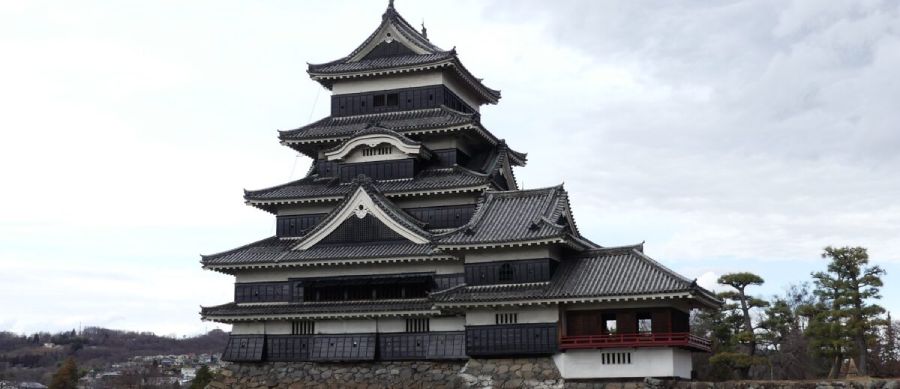
In 1580, Masayuki Sanada, who served the Takeda clan, captured Numata Castle, which belonged to the Hojo clan in the Kanto region, by agreement. After that, it temporarily left the hands of Masayuki, but when the Hojo clan was destroyed by Toyotomi Hideyoshi in 1590, it came under the control of Nobuyuki Sanada and remained in Sanada territory until the Edo period.
In 1681, he became lord of the shogunate and separated from the Sanada family. Numata Castle was designated a historic site by the town of Numata in 1976. One existing castle gate is located in Kawaba Village, Gunma Prefecture, and three other castle gates have been relocated outside Kawaba Village.
The castle bell, founded by Shinkichi Sanada in 1634, still exists and has been designated an important cultural asset by Gunma Prefecture, and is on display at the Numata Historical Museum, which opened at Terrace Numata in 2019.
Matsushiro estate
Matsushirohan was located in the Hanishina district, Shinano province (today Matsushiro, Matsushiro City, Nagano City, Nagano prefecture) during the Edo period. His castle is Matsushiro Castle in the city of Nagano, Nagano Prefecture, and he governs four counties of Kawanakajima.

In 1622, Nobuyuki Sanada acquired the Ueda estate in Shinano province for 130,000 koku, and the land remained the property of the Sanada family until the end of the Edo period.
Today, some of the buildings from that era have been relocated and it is now Matsushiro Castle Ruin Park. In 2004, the Taikomon Gate, moats, stone walls, earthworks, etc., were restored in the park. It was selected as one of Japan‘s top 100 châteaux in 2006.
In 1964, part of the castle ruins, including the main tribute tower, were designated as a historic site by Nagano Prefecture. In 1981 (Showa 56), part of the castle ruins, including the main tribute tower, and the new palace were designated national historic sites.
Chokoku-ji Temple
The Chokoku-ji Temple in the town of Matsushiro was built in 1622 when Nobuyuki Sanada moved from Ueda Castle to Matsushiro Castle as the founder of the Hasedera Temple in Sanada no Sato, and is the Sanada family temple.
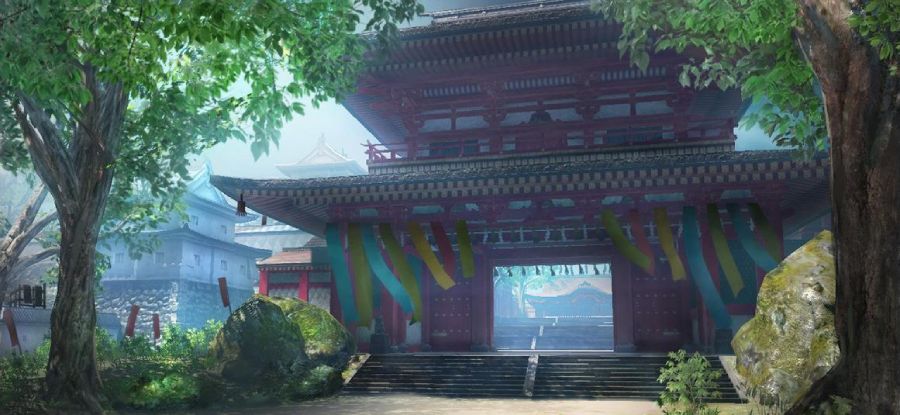
This is a place linked to the Sanada family, including the Nobuyuki Sanada mausoleum, the memorials of Yukimura Sanada and Daisuke Sanada, the tombs of the successive feudal lords of Matsushiro and the memorials of Yukitaka Sanada, Masayuki Sanada and Nobutsuna Sanada.
Statue by Nobuyuki Sanada and Princess Komatsuda
The statues of Nobuyuki Sanada and Princess Komatsatsu are located in Numata Park, near the ancient ruins of Honmaru. Numata Park is the site of Numata Castle, where Nobuyuki Sanada was the lord. The Sanada family also has ties to Numata.
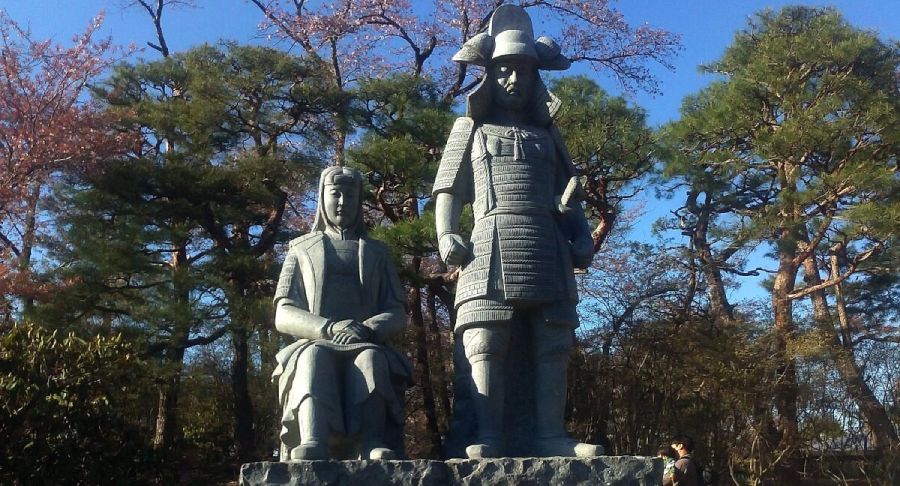
Ueda Castle
Ueda Castle is a Japanese castle located in the town of Ueda, Nagano Prefecture. It was a flat castle built in 1583 by Nobuyuki Sanada‘s father, Masayuki Sanada. The tower that remains today, was rebuilt by the Sengoku family during the Kanei era at the beginning of the Edo period.

It became the center of the battle to stop Tokugawa Hidetada at the Battle of Sekigahara and was destroyed by the victorious Tokugawa family the following year, 1601. Nobuyuki, who seized the territory of Ueda, set up a mansion on the site of the Sannomaru ruins of Ueda Castle, and used it as an estate office, and ruled making Numata Castle in Ueno province his main castle. At this time, the castle town began to be maintained.
Nobuyuki Sanada was transferred to Matsushiro, Shinano province, in 1622. The Sanada family was transferred to Ueda and the Sengoku family, which had ruled Komoro, was assigned to Ueda. The Sengoku family, who had moved away, asked the shogunate to rebuild the destroyed Ueda Castle.
Ueda Castle, which was rebuilt by the Sengoku family, had seven towers built on top of the main tribute tower, two tower gates, and a connecting wall. The exterior walls of the buildings, including the three towers of the main compound that are preserved today, have a black appearance because they are made of waterproof planks made of soot and khaki tannin.
In the Meiji era, the castle tower and other buildings were demolished and the buildings were moved outside the castle. All that remained inside the castle were the stone walls and a tower on the west side. In the Showa period, the two towers of the main tribute tower that had been moved outside the castle were restored to their original positions, and in the Heisei period, the doors and walls of the towers were restored with wooden construction.
Ueda Castle is now Ueda Castle Ruin Park, with the ruins of Ueda Castle at its center, and is a place for citizens to relax, with rows of 100-year-old zelkova trees and about 1,000 cherry blossom trees. The Sanada Shrine, located on the ruins of the main compound, is said to be the castle that did not fall during the Battle of Ueda, and is a popular place for students to pray for victory.
